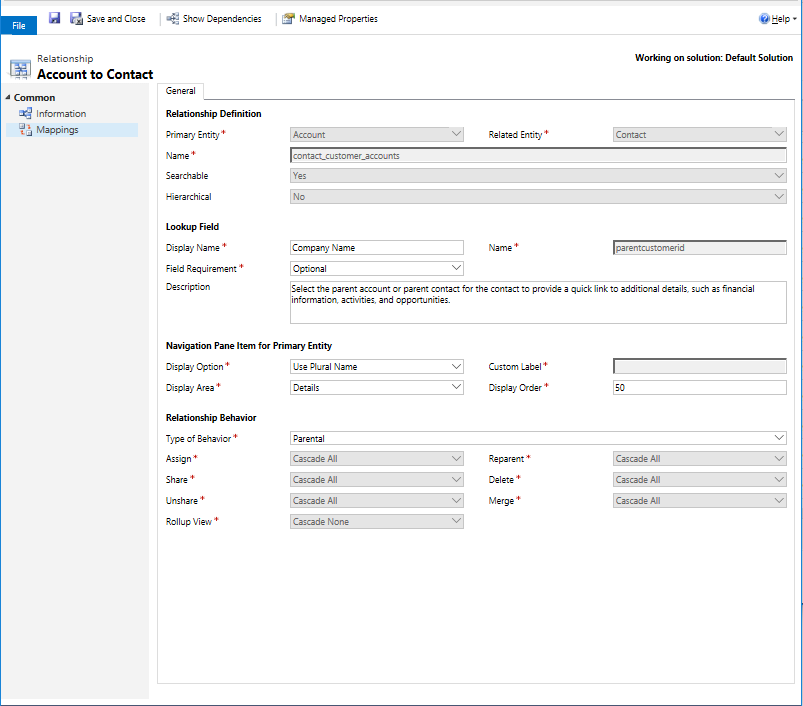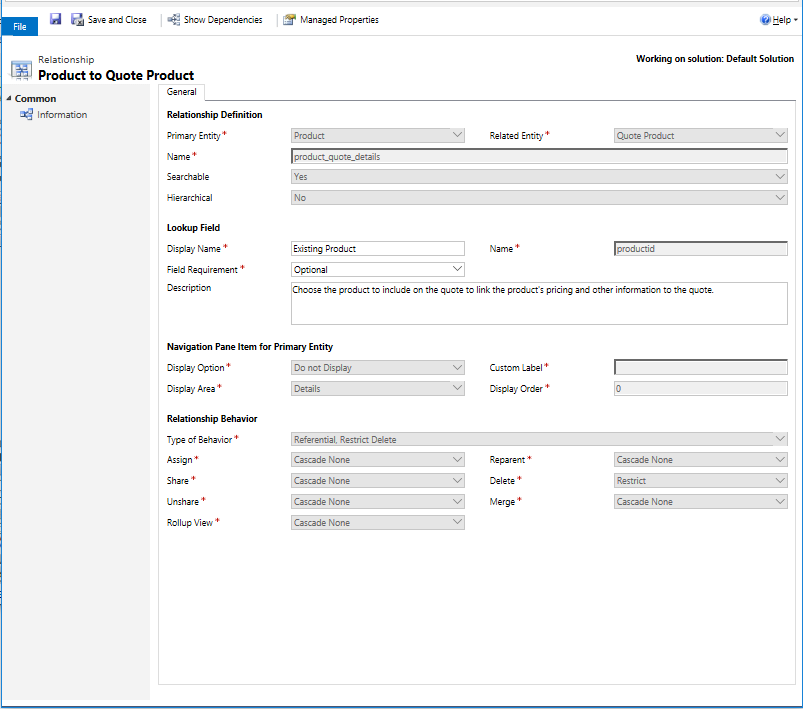Working in-depth amidst the Sales entities (e.g. Product, Price List, Quote etc.) within Dynamics CRM/Dynamics 365 Customer Engagement (CRM/D365CE) can produce some unexpected complications. What you may think is simple to achieve on the outset, based on how other entities work within the system, often leads you in a completely different direction. A good rule of thumb is that any overtly complex customisations to these entities will mean having to get down and dirty with C#, VB.Net or even JScript. For example, we’ve seen previously on the blog how, with a bit of a developer expertise, it is possible to overhaul the entire pricing engine within the application to satisfy specific business requirements. There is no way in which this can be modified directly through the application interface, which can lead to CRM deployments that make imaginative and complicated utilisation of features such as Workflows, Business Rules and other native features. Whilst there is nothing wrong with this approach per-say, the end result is often implementations that look messy when viewed cold and which become increasingly difficult to maintain in the long term. As always, there is a balance to be found, and any approach which makes prudent use of both application features and bespoke code is arguably the most desirous end goal for achieving certain business requirements within CRM/D365CE.
To prove my point around Sales entity “oddities”, a good illustration can be found when it comes to working with relationship field mappings and Product records. The most desirable feature at the disposal of CRM customisers is the ability to configure automated field mapping between Entities that have a one-to-many (1:N) relationship between them. What this means, in simple terms, is that when you create a many (N) record from the parent entity (1), you can automatically copy the field values to a matching field on the related entity. This can help to save data entry time when qualifying a Lead to an Opportunity, as all the important field data you need to continue working on the record will be there ready on the newly created Opportunity record. Field mappings can be configured from the 1:N relationship setting window, via the Mappings button:
There are a few caveats to bear in mind - you can only map across fields that have the same underlying data type and you cannot map multiple source fields to the same target (it should be obvious why this is 🙂) - but on the whole, this is a handy application feature that those who are more accustomed to CRM development should always bear in the mind when working with CRM/D365CE.
Field mappings are, as indicated, a standard feature within CRM/D365CE - but when you inspect the field relationships between the Product and Quote Product entity, there is no option to configure mappings at all:
Upon closer inspection, many of the relationships between the Product entity and others involved as part of the sales order process are missing the ability to configure field mappings. So, for example, if you have a requirement to map across the value of the Description entity to a newly created Quote Product record, you would have to look at implementing a custom plugin to achieve your requirements. The main benefit of this route is that we have relatively unrestricted access to the record data we need as part of a plugin execution session and - in addition - we can piggyback onto the record creation process to add on our required field “in-flight” - i.e. whilst the record is being created. The code for achieving all of this is as follows:
using System;
using Microsoft.Xrm.Sdk;
using Microsoft.Xrm.Sdk.Query;
namespace D365.BlogDemoAssets.Plugins
{
public class PreQuoteProductCreate_GetProductAttributeValues : IPlugin
{
public void Execute(IServiceProvider serviceProvider)
{
//Obtain the execution context from the service provider.
IPluginExecutionContext context = (IPluginExecutionContext)serviceProvider.GetService(typeof(IPluginExecutionContext));
//Get a reference to the Organization service.
IOrganizationServiceFactory factory = (IOrganizationServiceFactory)serviceProvider.GetService(typeof(IOrganizationServiceFactory));
IOrganizationService service = factory.CreateOrganizationService(context.UserId);
//Extract the tracing service for use in debugging sandboxed plug-ins
ITracingService tracingService = (ITracingService)serviceProvider.GetService(typeof(ITracingService));
tracingService.Trace("Tracing implemented successfully!");
if (context.InputParameters.Contains("Target") && context.InputParameters["Target"] is Entity)
{
Entity qp = (Entity)context.InputParameters["Target"];
//Only execute for non-write in Quote Product records
EntityReference product = qp.GetAttributeValue<EntityReference>("productid");
if (product != null)
{
Entity p = RetrieveProductID(service, product.Id);
string desc = p.GetAttributeValue<string>("description");
tracingService.Trace("Product Description = " + desc);
qp.Attributes["description"] = desc;
}
else
{
tracingService.Trace("Quote Product with record ID " + qp.GetAttributeValue<Guid>("quotedetailid").ToString() + " does not have an associated Product record, cancelling plugin execution.");
return;
}
}
}
public Entity RetrieveProductID(IOrganizationService service, Guid productID)
{
ColumnSet cs = new ColumnSet("description"); //Additional fields can be specified using a comma seperated list
//Retrieve matching record
return service.Retrieve("product", productID, cs);
}
}
}
They key thing to remember when registering your Plugin via the Plugin Registration Tool (steps which regular readers of the blog should have a good awareness of) is to ensure that the Event Pipeline Stage of Execution is set to Pre-operation. From there, the world is your oyster - you could look at returning additional fields from the Product entity to update on your Quote Product record or you could even look at utilising the same plugin for the Order Product and Invoice Product entities (both of these entities also have Description field, so the above code should work on these entities as well).
It’s a real shame that Field Mappings are not available to streamline the population of record data from the Product entity; or the fact that there is no way to utilise features such as Workflows to give you an alternate way of achieving the requirement exemplified in this post. This scenario is another good reason why you should always strive to be a Dynamics 365 Swiss Army Knife, ensuring that you have a good awareness of periphery technology areas that can aid you greatly in mapping business requirements to CRM/D365CE.


